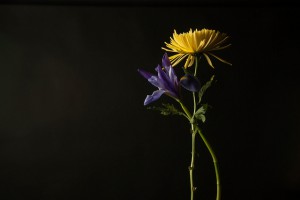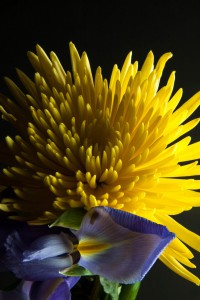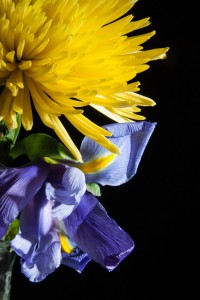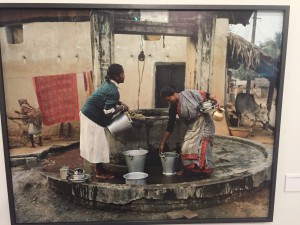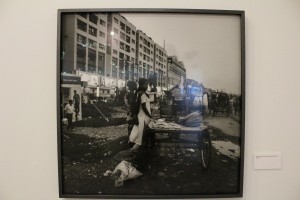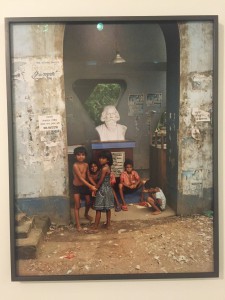The Aperture Gallery presents Patrick Faigenbaum’s project for Kolkata/Calcutta. He is a French photographer, and an award winner in 2013. Upon entering the gallery on the 4th floor using the elevator, a desk will be on your left. The gallery offers a variation of books about photography, and on its white walls in black frames thirty-five photographs are presented to anyone who visit the gallery. There is enough space between each photograph to not get distract by the one that follows. Most walls have from one to four photographs that complement one another, or are similar in some ways. After going over them I noticed they have an Indian theme, then I learn that Faigenbaum focused on the former capital of the British Indian Empire. The photos are of historical sides of the city, and what seems to be the daily routine of those that live there. They also are self portraits, music theme, educational, religious, and food.
The subject matter of the exhibit, as said before, is the former capital of the British Indian Empire and its historical locations of in the city. We see Indian civilians doing what they do for living, or in a daily basis. In addiction we see Kolkata’s vivid features. We do not see any modernism in the photographs. Most photos were more of a countryside. I noticed the vehicles in the streets, and a couple of photos are black and white which suggests past days, old fashion.
One of the photographs that I liked was of this one boy and subject of the photograph. I like the techniques Faigenbaum used on this photo; a medium shot, shallow depth of field, with a slight use of leading lines and use of rule of thirds. This image is also balanced in contrast. Cars in the background suggests movement. I like how despite the boy’s hands being in front of his face, you can see his eyes in focus and sharp; unlike his hands that are slight blurred out.
All in all the exhibit was about the local culture of Kolkata. The subject are its people and their life. An artist which Faigenbaum was inspired by, as said in the website. As well as the historical places of the city that once was the capital of the British Indian Empire. I think there is an emotional impact when observing these photographs, especially the ones in black and white. However, they all have an impact depending on how we look at them. It communicates unity, culture, religion, art, as well as life in Kolkata, India.

